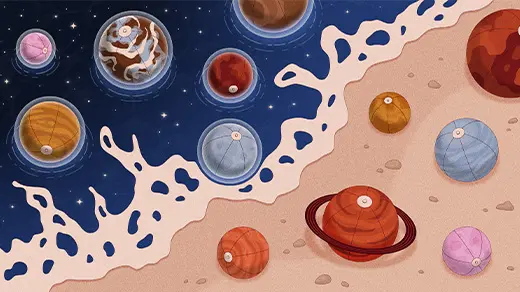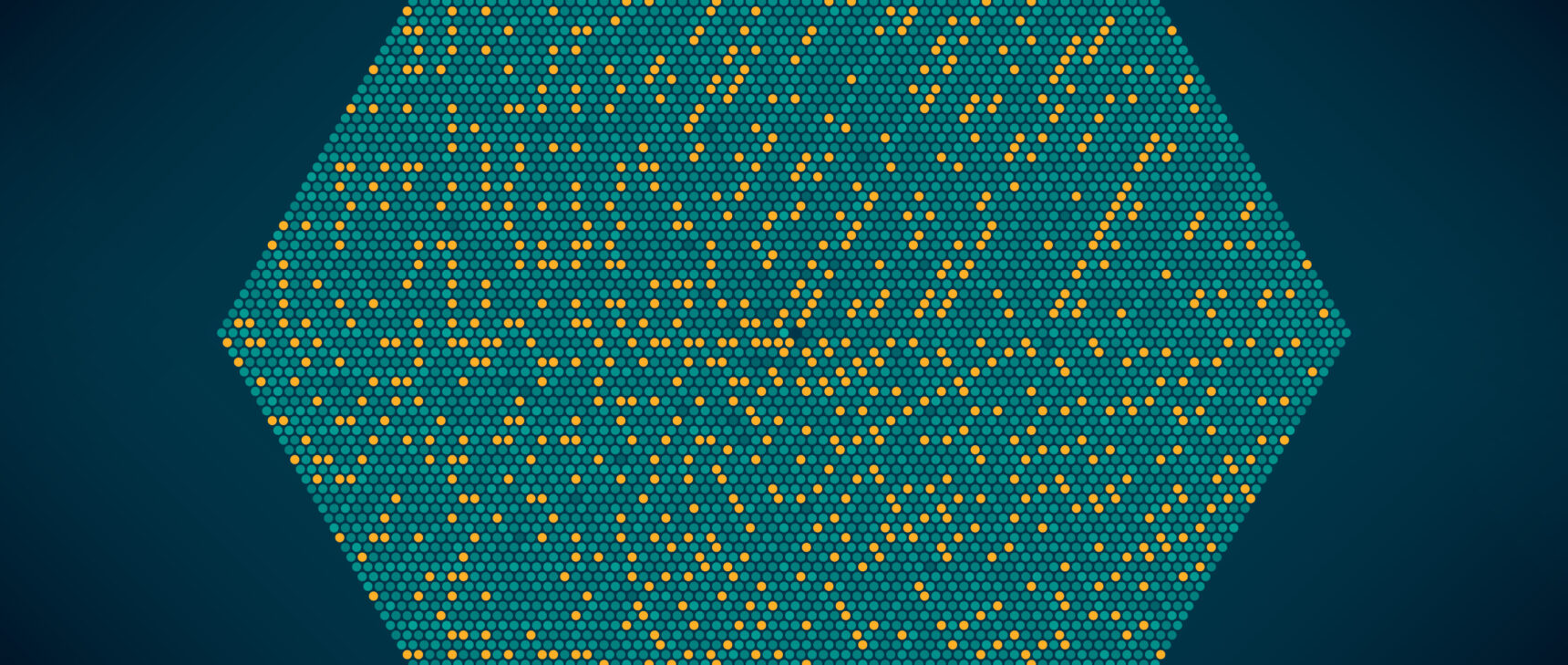How the Bits of Quantum Gravity Can Buzz
Introduction
Many physicists assume that gravitons exist, but few think that we will ever see them. These hypothetical elementary particles are a cornerstone of theories of quantum gravity, which seek to unify Albert Einstein’s general theory of relativity with quantum mechanics. But they are notoriously hard — perhaps impossible — to observe in nature.
The world of gravitons only becomes apparent when you zoom in to the fabric of space-time at the smallest possible scales, which requires a device that can harness truly extreme amounts of energy. Unfortunately, any measuring device capable of directly probing down to this “Planck length” would necessarily be so massive that it would collapse into a black hole. “It appears that Nature conspires to forbid any measurement of distance with error smaller than the Planck length,” said Freeman Dyson, the celebrated theoretical physicist, in a 2013 talk presenting a back-of-the-envelope calculation of this limit.
And so gravitons, according to conventional thinking, might only reveal themselves in the universe’s most extreme places: around the time of the Big Bang, or in the heart of black holes. “The problem with black holes is that they’re black, and so nothing comes out,” said Daniel Holz, an astrophysicist at the University of Chicago. “And the quantum gravity stuff is happening right at the center of this — so that’s too bad.”
But recently published papers challenge this view, suggesting that gravitons may create observable “noise” in gravitational wave detectors such as LIGO, the Laser Interferometer Gravitational-Wave Observatory. “We’ve found that the quantum fuzziness of space-time is imprinted on matter as a kind of jitter,” said Maulik Parikh, a cosmologist at Arizona State University and a co-author of one of the papers.
And while it’s still unclear if existing or even future gravitational wave observatories have the sensitivity needed to detect this noise, these calculations have made the near-impossible at least plausible. By considering how gravitons interact with a detector en masse, they have given a solid theoretical footing to the idea of graviton noise — and taken physicists one step closer to an experimental proof that deep down, gravity plays by the rules of quantum mechanics.
The Jitter of the Wave
Dyson’s 2013 calculation convinced many people that gravitational wave detectors were, at best, impractical probes for learning about quantum gravity.
“There’s a kind of default consensus that it’s a waste of time to think about quantum effects and gravitational radiation,” said Frank Wilczek, a Nobel Prize-winning physicist at the Massachusetts Institute of Technology who was a co-author with Parikh on the new paper. Indeed, neither Wilczek, Parikh nor George Zahariade, a cosmologist at Arizona State and the third co-author, took the possibility seriously until after the 2015 discovery of gravitational waves by LIGO. “There’s nothing like actual experimental results to focus the attention,” said Wilczek.

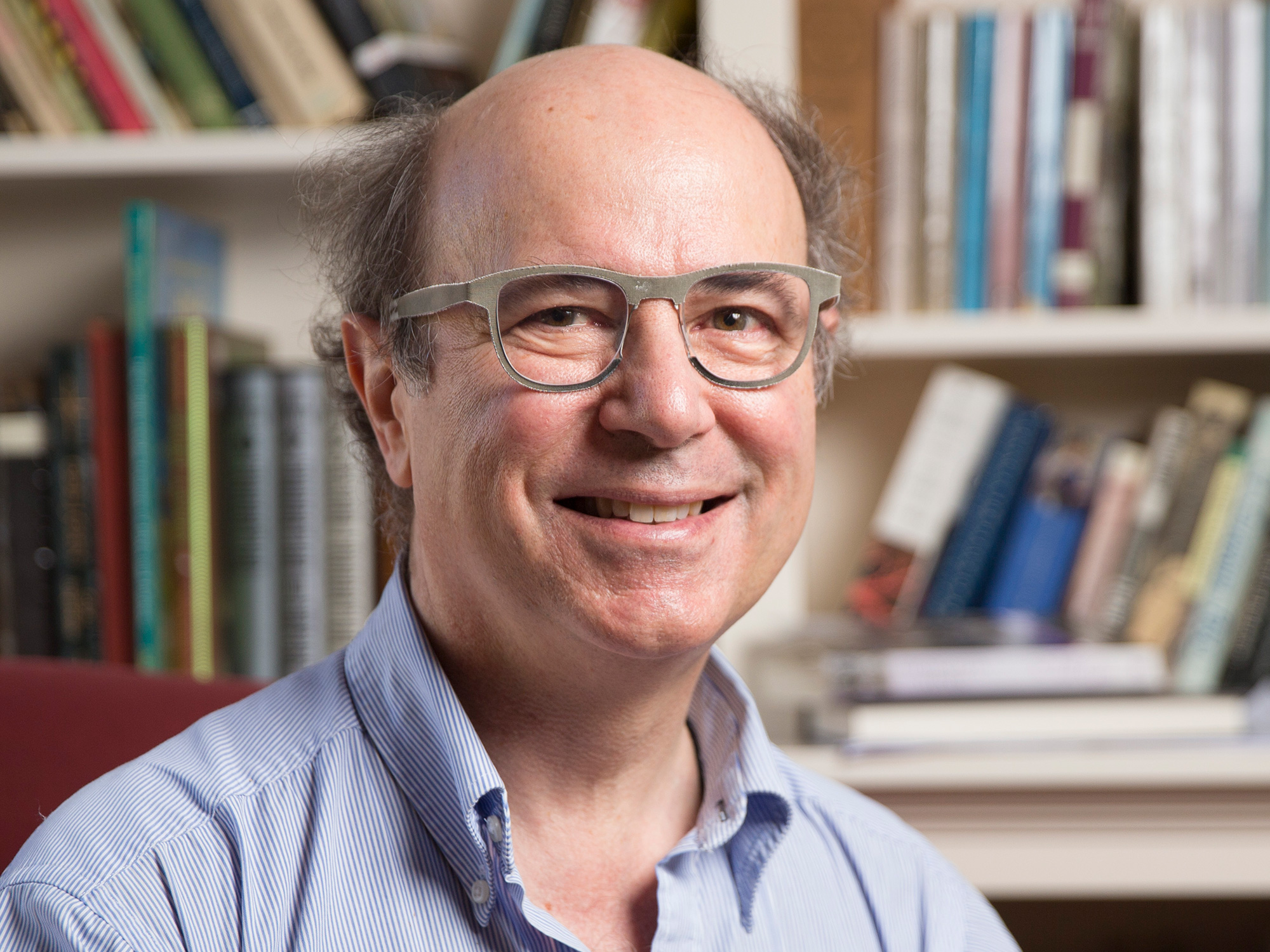
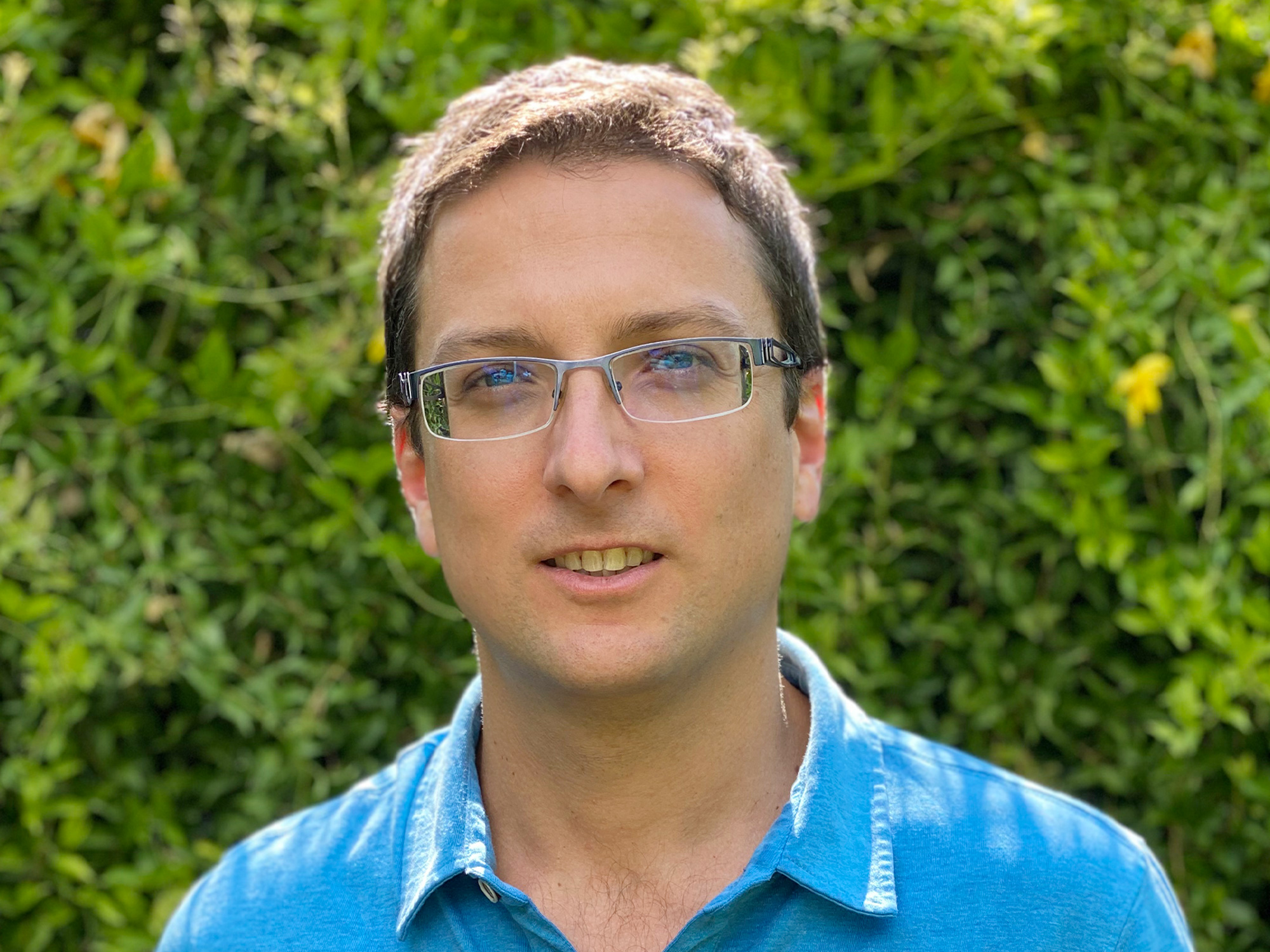
Maulik Parikh, Frank Wilczek and George Zahariade (from left) calculated how gravitational wave detectors could find evidence for gravitons.
Courtesy of Maulik Parikh; Katherine Taylor for Quanta Magazine; Ryan Rahn
Gravitons are thought to carry the force of gravity in a way that’s similar to how photons carry the electromagnetic force. Just as light rays can be pictured as a well-behaved collection of photons, gravitational waves — ripples in space-time created by violent cosmic processes — are thought to be made up of gravitons. With this in mind, the authors asked whether gravitational wave detectors are, in principle, sensitive enough to see gravitons. “That’s like asking: How can a surfer on a wave tell just from the motion that the wave is made up of droplets of water?” said Parikh.
Unlike Dyson, whose broad-brush calculation focused on a single graviton, they considered the effects of many gravitons. “We were always inspired by Brownian motion,” said Parikh, referring to the random jiggle and shake of microscopic particles in a fluid. Einstein used Brownian motion to deduce the existence of atoms, which bombard the microscopic particles. In the same way, the collective behavior of many gravitons might subtly reshape a gravitational wave.
Gravitational wave detectors can, at their simplest, be thought of as two masses separated by some distance. When a gravitational wave passes by, this distance will increase and decrease as the wave stretches and squashes the space between the masses. Add gravitons into the mix, however, and you add a new motion on top of the usual ripples in space-time. As the detector absorbs and emits gravitons, the masses randomly jitter. This is graviton noise. How big the jitter is, and thus whether it can be detected, ultimately depends on the type of gravitational wave hitting the detector.
Gravitational fields exist in different “quantum states,” depending on how they were created. Most often, a gravitational wave is produced in a “coherent state,” which is akin to ripples on a pond. Detectors like LIGO are tuned to search for these conventional gravitational waves, which are emitted from black holes and neutron stars as they spiral around each other and collide.
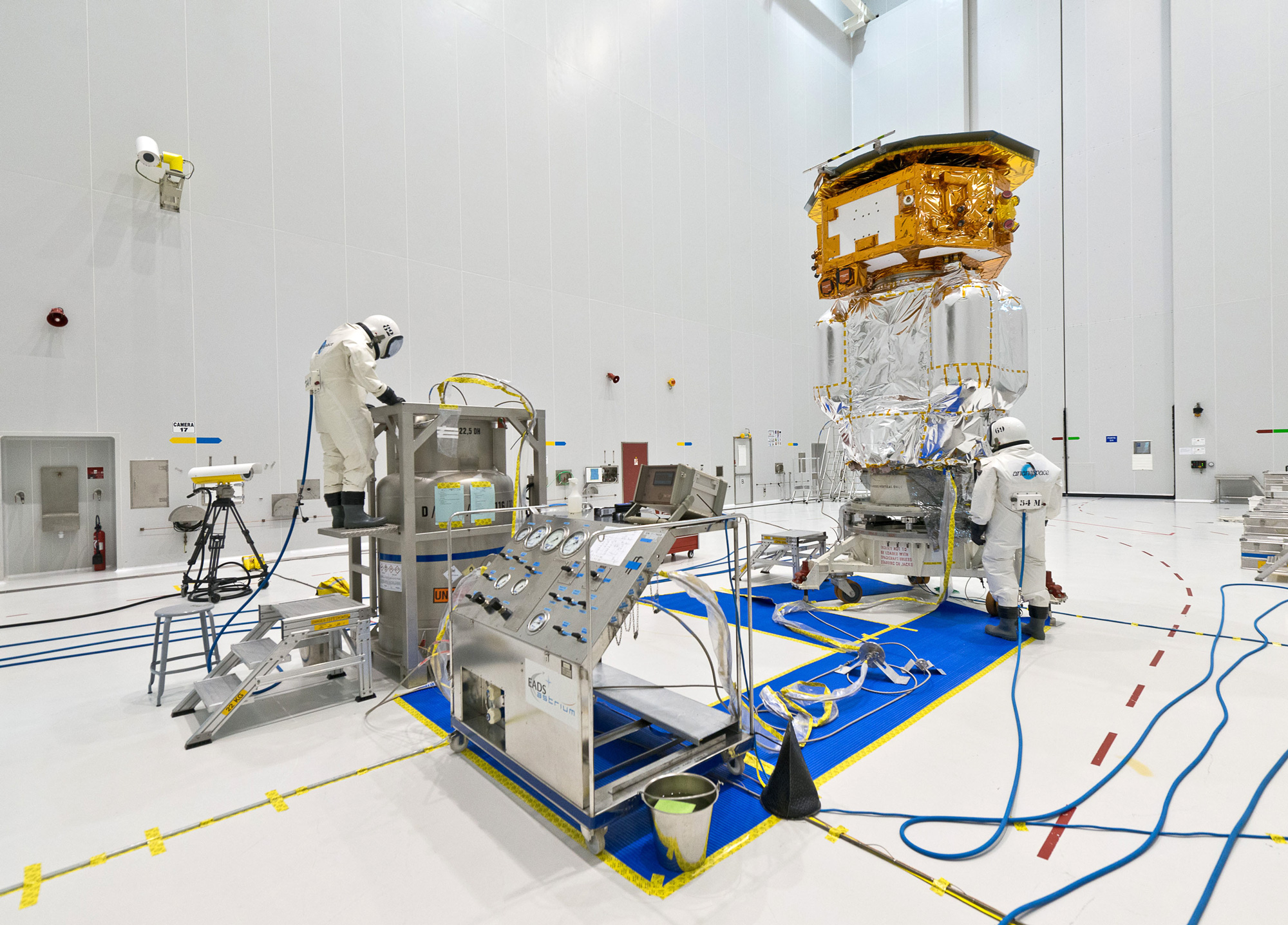
Next-generation gravitational wave detectors could be made of fleets of spacecraft. The LISA Pathfinder mission, shown here being prepared for its December 2015 launch, successfully tested the technologies that would be needed for these next-gen detectors.
Even coherent gravitational waves produce graviton noise, but — as Dyson also found — it’s far too small to ever measure. This is because the jitter created as the detector absorbs gravitons is “exquisitely balanced” with the jitter created when it emits gravitons, said Wilczek, who had hoped that their calculation would lead to a bigger noise for coherent states. “It was a little disappointing,” he said.
Undeterred, Parikh, Wilczek and Zahariade examined several other types of gravitational waves that Dyson did not consider. They found that one quantum state in particular, called a squeezed state, produces a much more pronounced graviton noise. In fact, Parikh, Wilczek and Zahariade found that the noise increases exponentially the more the gravitons are squeezed.
Their theoretical exploration suggested — against prevailing wisdom — that graviton noise is in principle observable. Moreover, detecting this noise would tell physicists about the exotic sources that might create squeezed gravitational waves. “They are thinking about it in a very serious way, and they’re approaching it in a precise language,” said Erik Verlinde, a theoretical physicist at the University of Amsterdam.
“We always had this image that gravitons would bombard detectors in some way, and so there would be a little bit of jitter,” said Parikh. “But,” Zahariade added, “when we understood how this graviton noise term arises mathematically, it was a beautiful moment.”
The calculations were worked out over three years and are summarized in a recent paper. The paper describing the complete set of calculations is currently under peer review.
Yet while squeezed light is routinely made in the lab — including at LIGO — it’s still unknown whether squeezed gravitational waves exist. Wilczek suspects that the final stages of black hole mergers, where gravitational fields are very strong and changing rapidly, could produce this squeezing effect. Inflation — a period in the early universe when space-time expanded very rapidly — could also lead to squeezing. The authors now plan to build precise models of these cosmological events and the gravitational waves they emit.
“This opens the door to very difficult calculations that are going to be a challenge to carry through to the end,” said Wilczek. “But the good news is that it gets really interesting and potentially realistic as an experimental target.”
A Hologram Shake
Rather than looking to quantum sources in the cosmos, other physicists hope to see graviton noise directly in the bubbling vacuum of space-time, where particles fleetingly pop into existence and then disappear. As they appear, these virtual particles cause space-time to gently warp around them, creating random fluctuations known as space-time foam.
This quantum world might seem inaccessible to experiment. But it’s not — if the universe obeys the “holographic principle,” in which the fabric of space-time emerges in the same way that a 3D hologram pops out of a 2D pattern. If the holographic principle is true, quantum particles like the graviton live on the lower-dimensional surface and encode the familiar force of gravity in higher-dimensional space-time.
In such a scenario, the effects of quantum gravity can be amplified into the everyday world of experiments like LIGO. Recent work by Verlinde and Kathryn Zurek, a theoretical physicist at the California Institute of Technology, proposes using LIGO or another sensitive interferometer to observe the bubbling vacuum that surrounds the instrument.
In a holographic universe, the interferometer sits in higher-dimensional space-time, which is closely wrapped in a lower-dimensional quantum surface. Adding up the tiny fluctuations across the surface creates a noise that is big enough to be detected by the interferometer. “We’ve shown that the effects due to quantum gravity are not just determined by the Planck scale, but also by [the interferometer’s] scale,” said Verlinde.
If their assumptions about the holographic principle hold true, graviton noise will become an experimental target for LIGO, or even for a tabletop experiment. In 2015 at the Fermi National Accelerator Laboratory, a tabletop experiment called the Holometer looked for evidence that the universe is holographic — and was found wanting. “The theoretical ideas at that time were very primitive,” said Verlinde, noting that the calculations in his paper with Zurek are grounded on the more in-depth holographic methods developed since then. If the calculations enable researchers to precisely predict what this graviton noise looks like, he thinks their odds of discovery are better — although still rather unlikely.
Zurek and Verlinde’s approach will only work if our universe is holographic — a conjecture that is far from established. Describing their attitude as “more of a wild west mentality,” Zurek said, “It’s high risk and unlikely to succeed, but what the heck, we don’t understand quantum gravity.”
Uncharted Territory
By contrast, Parikh, Wilczek and Zahariade’s calculation is built on physics that few would disagree with. “We did a very conservative calculation, which is almost certainly correct,” said Parikh. “It essentially just assumes there exists something called the graviton and that gravity can be quantized.”
But the trio acknowledge that more theoretical legwork must be done before it’s known whether current or planned gravitational wave detectors can discover graviton noise. “It would require several lucky breaks,” said Parikh. Not only must the universe harbor exotic sources that create squeezed gravitational waves, but the graviton noise must be distinguishable from the many other sources of noise that LIGO is already subject to.
“So far, LIGO hasn’t shown any signs of physics that breaks with the predictions of Einstein’s general relativity,” said Holz, who is a member of the LIGO collaboration. “That’s where you start: General relativity is amazing.” Still, he acknowledges that gravitational wave detectors are our best hope for making new fundamental discoveries about the universe, because the terrain is “completely uncharted.”
Wilczek argues that if researchers develop an understanding of what graviton noise might look like, gravitational wave detectors can be adjusted to improve the chances of finding it. “Naturally, people have been focusing on trying to fish out signals, and not worrying about the interesting properties of the noise,” said Wilczek. “But if you have that in mind, you would maybe design something different.” (Holz clarified that LIGO researchers have already studied some possible cosmic noise signals.)
Despite the challenges ahead, Wilczek said he is “guardedly optimistic” that their work will lead to predictions that can be probed experimentally. In any case, he hopes the paper will spur other theorists to study graviton noise.
“Fundamental physics is a hard business. You can famously write the whole thing on a T-shirt, and it’s hard to make additions or changes to that,” Wilczek said. “I don’t see how this is going to lead there directly, but it opens a new window on the world.
“And then we’ll see what we see.”
This article was reprinted on Wired.com.


